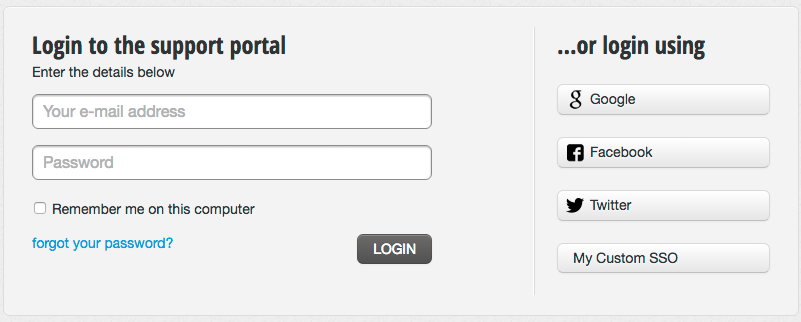Hello,
My intention is to still use at the same time Single Sign on and Normal login:
I want that freshdesk users will still continuing using the Normal login and at the same time I need SSO for user coming from an external website.
I did in this way:
- Click on Admin -> Security
- Enable SSO and select Simple SSO
- Copy the Shared secret
- Disable SSO





